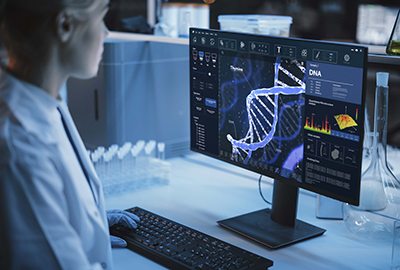The chemical space for drug-like compounds is so vast that it can barely be comprehended. By leveraging artificial intelligence (AI) principles, we can more intelligently search through this space and evaluate millions of compounds for multiple desired properties in parallel, thereby drastically speeding up the time to discover safe, effective therapies.
AI-Based Drug Design and Generative Modeling
The potential of small molecule therapeutic agents is at the core of our mission to create a future where disease is a thing of the past. AI-based drug design and generative modeling is poised at the edge of innovation, able to open doors and change the way we approach novel drug discovery.

Traditionally, the process of discovering new medicines takes years, due to the complexity of identifying the right compound to treat a particular disease safely and effectively. Enormous amounts of data must be analyzed to select the compound with the right chemical and biological properties from the vast universe of chemical space. The application of AI and generative modeling helps enable us to develop models that identify context clues used for selecting the optimal compounds and generating novel ones. Moreover, these learning algorithms refine their approach based on new data and without specific instructions. Additionally, our biosignature platform, which creates cell imaging datasets through the profiling of small molecules, provides our scientists with a holistic view on how new molecules affect biology. That knowledge is integrated into decision-making much earlier in the drug discovery process and is fed into the generative AI/machine learning (ML) algorithms to take the broad information on both desired and undesired biology into account in compound design.
Moving Beyond AI:
- We often use the term "AI" or "artificial intelligence" to describe our initiatives, but what we actually mean is something different: Augmented intelligence.
- AI brings to mind a computer operating in a siloed environment, working to solve our problems. In reality, augmented intelligence is the best of both worlds, combining the power of AI with computational chemistry and biology to digest the data and focus our scientists on the salient features and aid in their decision-making process.



